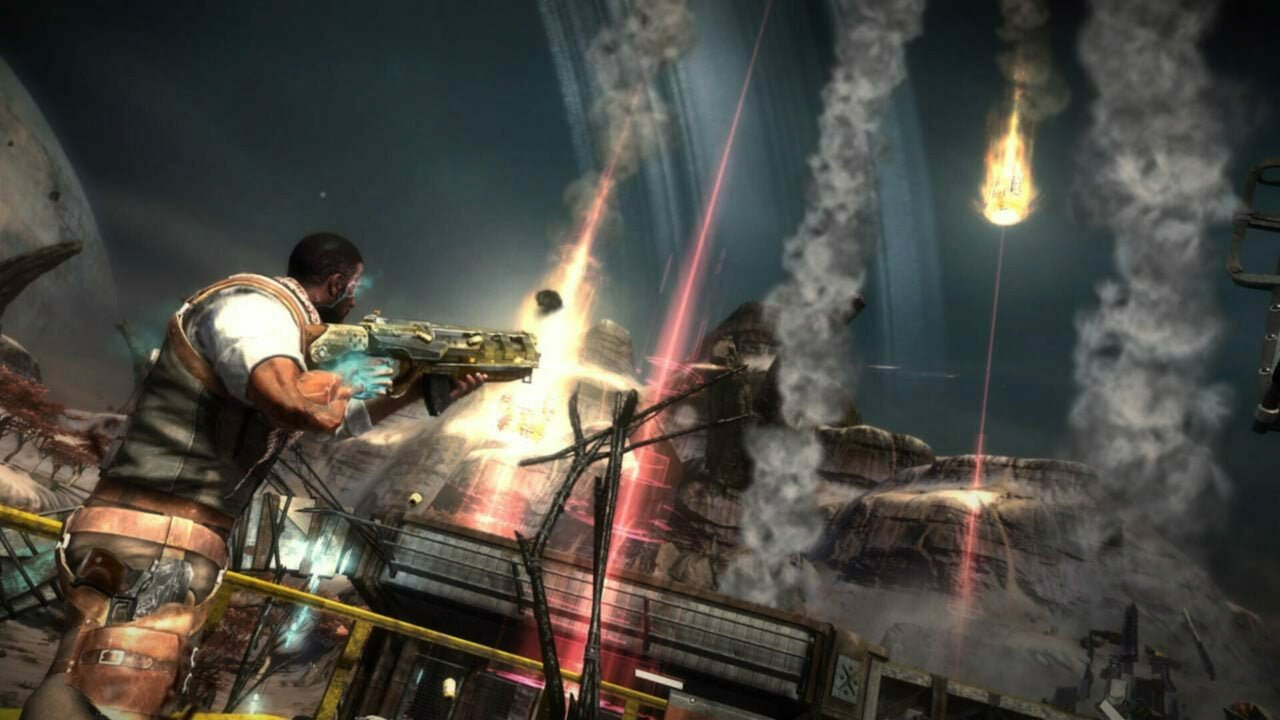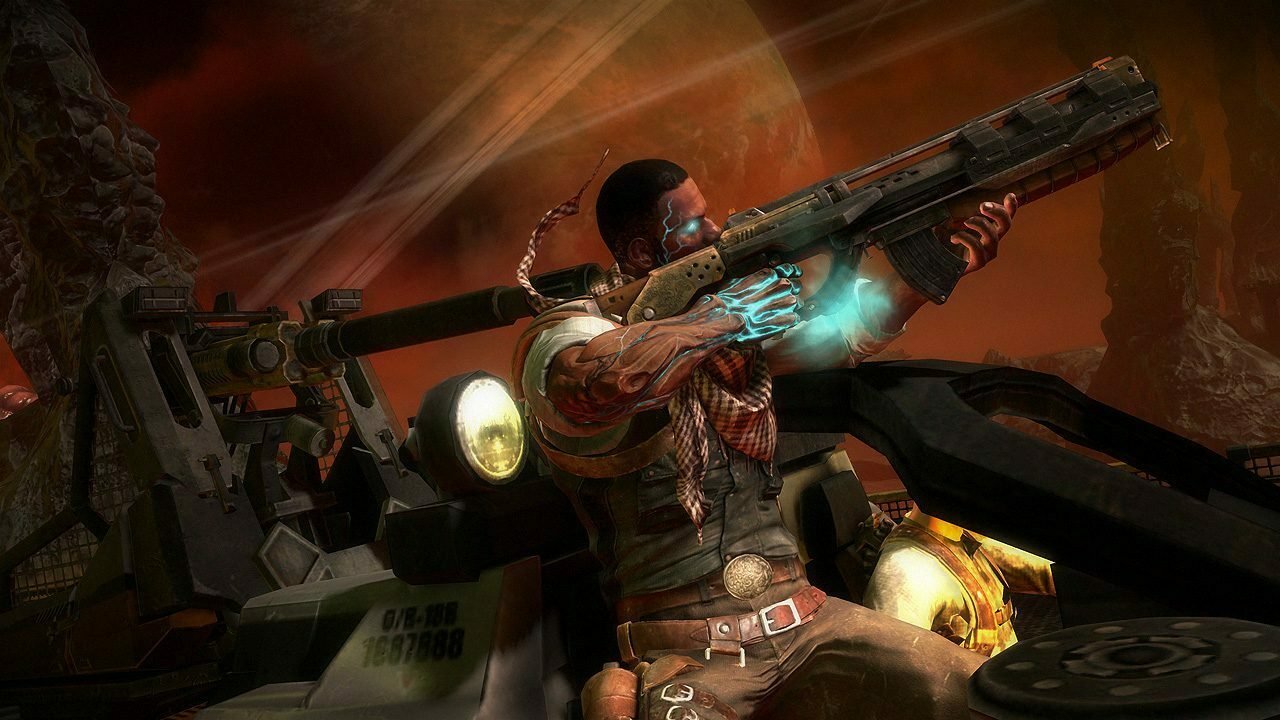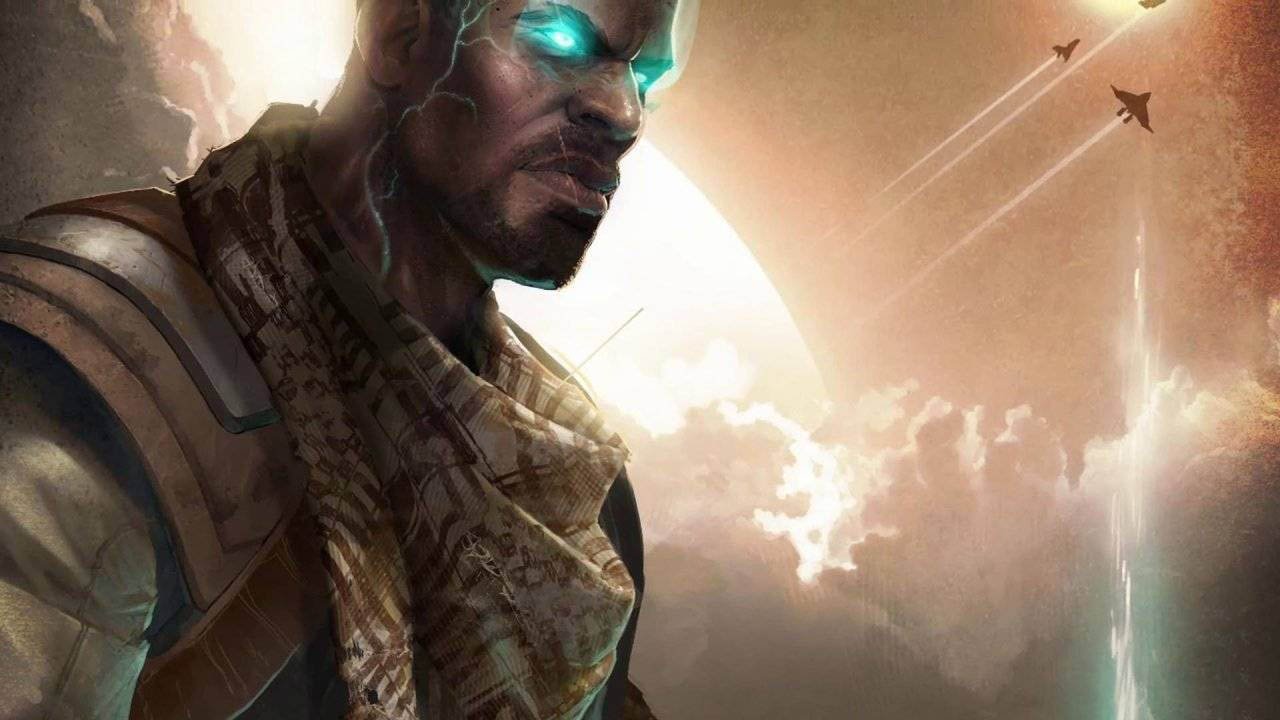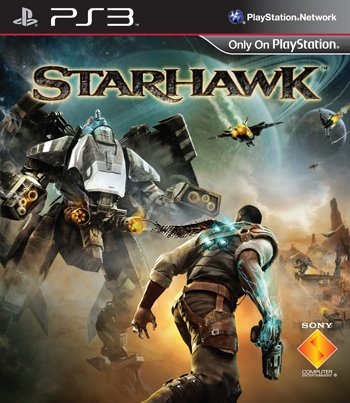The Battle To Build
Warhawk was a game that didn’t attract the gamers in droves, but for those who answered the call, it provided a complex, engaging and frenetic multiplayer-only experience that rewarded those willing to stick with its steep learning curve. Now the remnants of Incognito have reformed into LightBox, and they bring with them a bigger, faster, more complex competitive multiplayer experience that might just be the best thing to play on the PS3 if you like strategically shooting other people.
Unforgiven In Space
Emmett Graves is a Rift Salvager, a hired gun that works security protecting the mining operations of “Rift Energy,” the central resource of the game that makes it possible to fuel and/or construct everything from a sniper’s tower to a transformable combat mech. When he’s called back to his old hometown for a job, he finds himself going up against the most intelligent and organized band of Outcasts—humans mutated by overexposure to Rift energy—he’s ever fought with. Things go from bad to worse in this story that could have—in the hands of more capable story-tellers—been a compelling tale of family and redemption. Instead, we see a promising plot that really should have been in a less action oriented game in order to give it the space it needed to realize its potential.

Fortunately for Starhawk the strength of this game rests not in the story it’s trying to tell, but in the concept of many players driving cars, hover bikes and transforming mecha in order to kill each other. And in the graphics area, it manages to hold its own. This game won’t be winning awards for sheer artistic achievement, but it presents a variety of landscapes—from dusty plains to plainly alien worlds—with some flair and color. This is a western in space, and the art team has managed to evoke that sense of desolation in all the environments. More importantly, they’ve managed to achieve this with little sacrifice to performance. Barring connection problems which are not the fault of the game, when there are ships, men, and other vehicles all zooming around and firing at each other, the game manages to keep frame rates going without a significant hitch, and environments—despite being pretty large—keep the pop-up and draw-in to a minimum. For a multiplayer game, these are pretty important factors and LightBox clearly gets that. It’s even more impressive when you consider how open-ended the combat can be, what with robots transforming into fighters and taking to the sky to duke it out in aerial combat while people below regularly hop into tanks and start shelling things with heavy artillery.
Sound comes with some pretty high expectations considering this is a shooter, but Starhawk delivers. There are explosions, gunfire, bursts of energy, and all of it is well represented for people with the audio equipment to take advantage of the directional sound. The music manages to surprise, with compositions that evoke the twangy, lonely mood of the old west that Starhawk is clearly inspired by. Chris Lennertz, the composer, understood the tone of the game, and it’s a unique, distinctive set of tracks he’s crafted for it. You still get a soaring orchestral score when a player takes to the skies in the titular Starhawk fighter, but you also get harmonicas, bluegrass, and the sense that tumbleweed is threatening to blow by any second when you drive by a dusty, empty town, in true western fashion. The voice acting is decent, with veteran Khary Peyton doing a respectable job of delivering some not very compelling dialog. Ultimately it’s not the actual quality of the performances that are a let down here, so much as the failure of the story and dialog to live up to the promise of the premise.

Battle Tanks Now Available On Amazon With Free Shipping
Let’s just get this out of the way right at the start; the single weakest link in the chain that is Starhawk is the single-player campaign. LightBox is a developer that understands multiplayer and that expertise is definitely on show here. Unfortunately that also makes it very obvious just how little experience they have in the single-player arena. While it’s a given that most games with a multiplayer component will use the campaign as a “tutorial with a plot” in order to get players up and running with the fundamental mechanics of a combat system, they usually attempt to do so in a compelling, entertaining way. LightBox failed in this regard, creating a campaign that is essentially a one player version of the infamous Horde Mode from Gears of War. Players will see all the maps, and they will go through each chapter, dutifully calling down new equipment from the “Build” menu, but they will do it exactly the same way each time; they’ll take down some existing enemies, get a warning that more are incoming, and then have a short amount of time to build some defenses while a timer counts down to the next wave.
Aside from the actual variety that comes from the way the players themselves choose to approach each situation—which is admittedly pretty diverse—the mission structure of the game itself doesn’t deviate from this recurring series of enemy waves. Other games might give you escort missions, a secret rendezvous, or a WWII-style Normandy-esque massive assault that you take part in switch things up, but Starhawk’s single-player mode is slavishly focused on its wave-based combat. By the third chapter, it starts feeling monotonous and that feeling never really goes away until an honest-to-goodness boss fight occurs in the concluding chapter. It’s obvious Sony really needed to build this campaign in to justify the full $60 price tag on this game, but it’s equally obvious that for the people who did their homework and know what they’re getting into with Starhawk, this is a disposable experience they might be better off abandoning after getting their feet wet in the first chapter or two. There’s an option to play this in co-op, even using local split-screen, but then it just ends up feeling even more like Horde Mode, though it’s also easier to manage certain chapters.

The main event is, of course, the multiplayer, and it’s here that the game really shines. First up, the controls for the game do a great job of tweaking the handling and responsiveness regardless of which vehicle you’re using. Whether you’re just running around on your own with a rocket launcher, or driving around in a tank to deliver some heavy artillery to the enemy base, each control set up feels distinct and has its own quirks that you need to take into account in order to be an effective fighter. This more true in the eponymous Starhawk fighters than anywhere else. It’s absolutely essential that they got this right, because when it comes time to jump into multiplayer, things can descend into absolute chaos and you’ll need those tight controls to get the job done.
Starhawk plays it very conservatively with its modes, giving us just Deathmatch, Team Deathmatch, Capture The Flag, and “Zones,” which is about just another territorial control variant. That doesn’t seem like a lot of play variety, but all the flexibility of this game comes from its “Build n’ Battle” mechanic. This is a real-time strategy “lite” concept where players are constantly accumulating “rift energy,” the basic resource for construction. Get enough of it, and you can call down everything from a sniper tower to a launch pad for the transformable combat mech known as the Starhawk. Kill enemies and you get even more rift energy. In some ways, this almost feels like the concept Double Fine was grasping for when they attempted to marry an action game to an RTS in Brutal Legend, but Starhawk got the mix right. The Build n’ Battle mechanic transforms the game from a straightforward, competitive multiplayer experience into a dynamic, unpredictable struggle, where teamwork is absolutely essential to victory.
With the ability to create installations and vehicles, at a moment’s notice, it is the quick thinkers and strategists who know how to use these assets that will rule over the Modern Warfare player who merely runs and guns with no thought to tactics or teamwork. As to be expected in this day and age, an RPG-esque mechanic exists for leveling up, allowing for a greater degree of customizing avatar appearance as well as acquiring skill points to distribute. The skill points further help customize play-style preferences by giving perks like increased rift energy accumulation for people that prefer to hang back and reinforce the base, or combat bonuses for those that prefer to take it to the enemy.

If there’s any one weakness to the actual gameplay itself, it lies in the basic infantry game. That’s no real surprise; in a game where any player can call down a building or vehicle at any time, infantry is likely to be underpowered. This is probably going to be the biggest adjustment that players will have to make, accepting the fact that they are underpowered. Assault vehicles, tanks and even anti-air turrets are all much more valuable than just a guy with a gun, although even a single infantry soldier is still capable to taking down a Starhawk with rocket launcher and some skill. But there’s a clear disadvantage to the soldier here, so if you’re not into vehicular combat, or building things, this is an imbalance that might be a deal breaker.
The online infrastructure for the game is well-considered, with many of the standards that players have come to expect, like match-making, clans, and even a few extra surprises. There’s an “MP Homeworld,” feature, which is really just a “lobby” of sorts for players to hang out in from one of the maps in the game, where they can build, tool around in vehicles and socialize with others. There’s also an option to visit the maps solo, so players can drive or fly around at their leisure and familiarize themselves with the combat area. Little touches like this show that LightBox has been listening to the feedback from fans and have made Starhawk one of more the comprehensive, player-friendly multiplayer experiences on the PS3.
This one is actually an easy recommend in some respects. There’s a lacklustre single-player campaign here, which makes the $60 asking price for Starhawk somewhat more difficult to swallow. But for fans of multiplayer, particularly ones that may have been burned in recent years by PS3 exclusives like SOCOM or MAG, this is the one that you might have been waiting for. A complex, varied, team-based multiplayer experience combines with a robust, feature-filled online structure, and an original and dynamic concept in the Build n’ Battle mechanic to present a deep, engrossing and fast-paced competitive multiplayer experience. It’s not for runners n’ gunners, but for people looking for something beyond the die & respawn antics of Call of Duty, this is a welcome change of pace.






